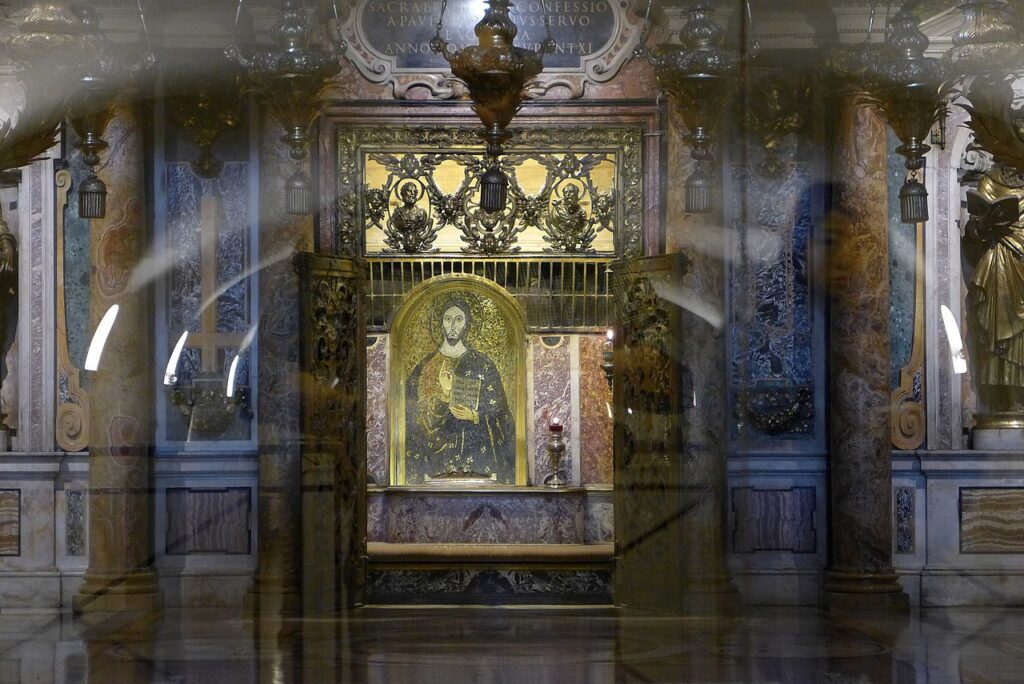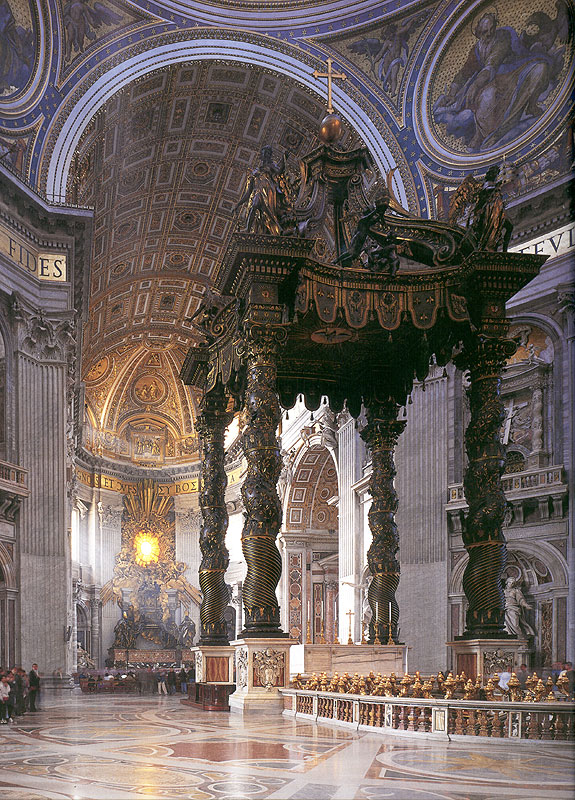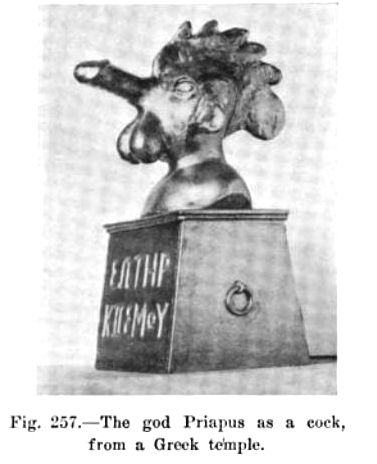
SAINT PETER’S BONES DISCOVERED IN 1968!
In 1942, the Administrator of St. Peter’s, Monsignor Ludwig Kaas, found remains in a second tomb in the monument. Being concerned that these presumed relics of a saint would not be accorded the respect they deserved, and having little understanding of correct archeological procedures, he secretly ordered these remains stored elsewhere for safe-keeping.
The building of the first St. Peter’s Basilica during the reign of Constantine I, was constructed about AD 330. Though many bones have been found at the shrine, as the result of two campaigns of archaeological excavation, Pope Pius XII stated in December 1950 that none could be confirmed to be Saint Peter’s with absolute certainty
After Kaas’s death (April 1952), Professor Margherita Guarducci discovered these relics by chance. She informed Pope Paul VI of her belief that these remains were those of Saint Peter. Bone testing revealed that the remains belonged to a man in his sixties. On June 26, 1968, Pope Paul VI announced that the relics of Saint Peter had been discovered. On November 24, 2013, these relics were held by Pope Francis and displayed publicly for the first time after celebrating closing ‘Year of Faith’ Mass.
In 1953 Antonio Ferrua, the archaeologist who headed the excavation that uncovered what is known as Saint Peter’s Tomb, said that he wasn’t convinced that the bones that were found were those of Saint Peter.


PETER THE ROCK
PETR means rock. This is the heirophant or chief high priest that is the spokesman for “the god in the flesh”. This verse is what the Catholic papacy claimed authority from. It is claimed to be inserted into the New Testament to uphold the authority of Constantine’s universal (Catholic means universal) church.
18 And I tell you that you are Peter, and on this rock I will build my church, and the gates of Hades will not overcome it. Matthew 16:18
PETER THE SATAN
Jesus turned and said to Peter, “Get behind me, Satan! You are a stumbling block to me; you do not have in mind the concerns of God, but merely human concerns.” Matthew 16:23
But when Jesus turned and looked at his disciples, he rebuked Peter. “Get behind me, Satan!” he said. “You do not have in mind the concerns of God, but merely human concerns.” Mark 8:33
THE JESUS CHRIST CHURCH IS BUILT ON SATAN!

PETER THE COCK
St Peter’s repentance led to his becoming the cock symbol. His symbol, the cockerel, was later deemed by Pope Gregory I (AD 590-604) to be a suitable Christian emblem, and some churches started to use roosters as ‘weather-cocks’.
In the ninth century, Pope Nicholas I (AD 858-867) decreed the badge should be displayed on all churches and many incorporated the design into weather vanes.
The oldest weather-cock is the Gallo di Ramperto, forged between AD 820 and 830. It was displayed on the bell tower of the Church of Saints Faustino and Giovita in Brescia, Italy, until 1891, when it was moved to the town’s museum.
PHALLIC SYMBOL
Peter is from Latin word Pater meaning father. It also used to mean the male sexual organ as is seen to this day.

Gordon Williams in A Dictionary of Sexual Language and Imagery (258), comments about this artifact:
The relationship of cock and phallus is ancient. A bronze bust in the Vatican Museum, bearing the Greek inscription “Redeemer of the World” (Fuchs, Geschichte der Erotischen Kunst [Berlin 1908] fig. 103), is given a cock’s head, the nose or beak being an erect penis.
find the pertinent figure in Fuchs on p. 133. Also discover more information in Daniela Erlach’s Privatisierung der Triebe? (1994:203) about the “small bust known as the Albani bronze, still housed in the Vatican’s secret collection…” Read further: “Its plinth is inscribed ‘Saviour of the World’ in Greek, and it is possibly of Gnostic import.”
In another mention of the “notorious Albani bronze said to be held in the Vatican Museum,” we learn that such Roman phallic representations are called priapi gallinacei. (Jones, Malcolm, The Secret Middle Ages, 75) As we can see, this bronze image is “celebrated” and “notorious,” which means many scholars have written about it, also stating that it is “housed” and “held” in the Vatican Museum.
Romanum Museum, 1692